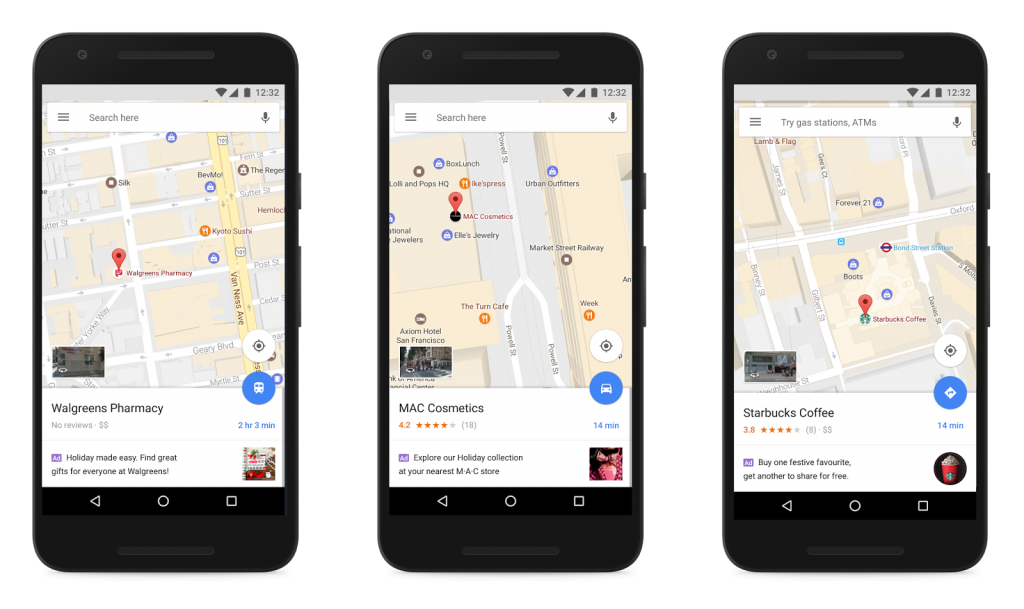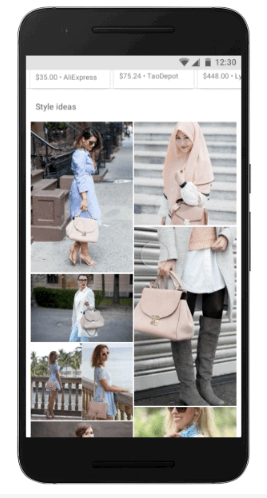7 Paid Marketing Strategies Retail Brands Should Be Testing in 2017

From voice search to the evolution of the attribution model, there’s an endless amount of opportunities on the horizon for paid advertising professionals. This month, representatives from Google, Facebook and Adobe (just to name a few) gathered in LA at the HERO Conf to discuss the latest trends sweeping the industry.
As exciting as it is to discuss the potential of machine learning technology or the implementation of chatbots, what PPC professionals and retail brands really want to know is: Which advertising techniques are going to improve my business?
If you didn’t have the opportunity to attend the conference, no worries.
In the following blog post, CPC Strategy’s Retail Search Managers and PPC experts, Meghan Parsons and Caroline Diehl, highlight all the major takeaways including which advertising techniques you should be testing right now.
How can advertisers leverage Artificial Intelligence (AI)?
We’ve seen a rise in the number of advertisers leveraging Artificial Intelligence (AI) capabilities and this proved to be a popular topic among many of the presenters at HERO this year.
Artificial Intelligence is the development of computer systems to perform tasks that normally require human intelligence, such as visual perception, speech recognition, decision-making, and translation between languages.
Chatbots:
Throughout most of 2016, a popular AI development was the chatbot, which leverages automation to communicate with consumers in the same manner a human would.
Bots offer 24/7 support to answer customer questions when live support may not be available. The general goal behind bots is that they are able to offer digital customers the same assistance salespeople in a store might.
 “Now, you can take an FAQ page and use that as a framework to create a chatbot that will respond to your customers,” Diehl said.
“Now, you can take an FAQ page and use that as a framework to create a chatbot that will respond to your customers,” Diehl said.
Since its introduction, bots have grown tremendously. A mere three months after Facebook launched their “Messenger Chatbots“, there were nearly 11,000 Facebook Messenger bots (The Verve). There are now over 34,000 active bots serving a wide variety of companies.
Voice Search
Another growing trend in the industry is the use of voice search. As a performance ad agency, we’re already thinking about what advertising will look like on voice-first devices. It’s no surprise to see shopping channels like Google investing in their own voice-activated products (Google Home), after the success of Amazon Echo.

BLOG POST: Amazon vs. Google: Who Will Win the Most Voice-First Shoppers?
According to Scott Galloway, Clinical Professor of Marketing at the New York University Stern School of Business, “Voice-based technologies are taking over the world”.
Kleiner Perkins‘ data supports this theory: 65% of US smartphone owners already use voice assistance technology and those numbers are expected to grow throughout 2017.
Although most people use voice search to discover information or build out their daily calendar, it’s not necessarily the first stop for shopping inquiries.
So, how are paid advertisers convincing households to adopt voice search technology for shopping?
Well according to Galloway – price.
Amazon is already providing voice search customers with discounts and benefits for ordering their products through Alexa vs. online.
Additionally, Amazon’s Choice is a label applied to products that can be directly purchased from Amazon Echo by voice command. In the past, Amazon Echo could only reorder items that a customer had already purchased. Now, Prime members can place voice orders via Echo for music and “tens of millions” of Prime-eligible products.
At this time, although there is no data segment within AdWords to measure the impact of voice search, Diehl anticipates there will be in the near future as voice continues to gain momentum in the shopping realm.
AI & PPC
But the biggest question remains: How can advertisers leverage AI to manage their PPC efforts?”
According Diehl, the general consensus is that practitioners will gradually “transition away from writing their own rules and instead, leverage the power of machine learning technology to create the rules for them.”
But the definitive role of Artificial Intelligence in PPC management is still very much up in the air.
A recent article by MarketingTech states, “So far, this technology is primarily used by a small subset of early-adopter companies in the software and media industries. As this technology continues to gain credibility and becomes increasingly accessible, it’s likely that we will start to see adoption break out of the early-adopter market and begin reaching the early-majority market.”
How can retailers resolve the disconnect between their customers and their ads?
 “Continuity was a big theme at HERO this year,” Parsons said.
“Continuity was a big theme at HERO this year,” Parsons said.
“Advertisers should make sure to take a step outside of their content and actually look at it from a customer perspective.”
“You should always be checking in to make sure that what you think, what you say in your ads is actually what your customer thinks you mean,” she said.
“Also, cut through the clutter and make sure your ads and website are clean and simple. You don’t necessarily need to take up every single space on a page or on your headline.”
Which mobile & local search strategies are going to have the biggest impact on advertisers?
As mobile & local search continue to shape marketing in 2017, advertisers will need to better understand the local search strategies used by competitors to stay ahead.
They must know, for example, which local markets they are in, how much visibility they achieve in these markets, and how they adjust messaging/offers/landing pages down to the city level.
Mobile search will join local as the other 2017 focus.
According to Ken Barber, VP of Marketing at the Search Monitor, “While a desktop strategy may work for some mobile users, marketers need to constantly test different keywords, offers, and landing pages to find the combination that works for a more distracted, location-aware consumer.”
BLOG POST: Retail Trends and Predictions for 2017
“Near Me” Searches
Near me searches (i.e. “tacos near me”) doubled last year, likely due to the rise of mobile, and we expect this trend to continue.
As a result, brands will begin to place more value in their location data and create strategies to optimize that data so they are present in the moments when and where consumers are searching.
Promoted Places in Google Maps
Select retail brands are also testing Promoted Places in Google Maps to showcase special offers & announcements in hopes to drive more foot traffic to their stores.

According to the announcement, 70% of smartphone users who bought something in a store first turned to their devices for information relevant to that purchase & one in four of them also used a map through a web browser or an app before making the purchase.
BLOG POST: Google Maps Promoted Places Seeks To Drive In-Store Foot Traffic
Searchable Local Inventory
Searchable local inventory is also expected to double this year.
According Cate Trotter, Head of Trends at Insider Trends, there are a few reasons why this will happen:
“First, customers have more certainty and a better experience when they can see what is and isn’t in stock nearby. This influences customers’ decision over who to buy from, so systems like these pay for themselves,” she said.
“Second, customer expectations are being set by the retailers that do offer this service–and the retailers that don’t offer it will start to lose out. There are also plug-and-play systems that make it easy for stores to make their inventory searchable from smartphones.”
What can we expect to see from Google’s image search?
According to Parsons’, Google is testing new ad creative, attempting to create a similar browsing experience based on Pinterest’s image search.
A few new image search features advertisers should be on the lookout for in 2017 include:
Style Ideas: Now, while perusing fashion product images, Image Search will surface a grid of inspirational lifestyle images and outfits that showcase how a product can be worn in real life. According to Business Insider, Style ideas is like having your own stylist. The feature is now available in the Google app for Android and mobile web.
Similar Items: Google also offers an expanded carousel for “similar items” while searching for apparel products. That means whether you’re researching shorts and sneakers or checking out sunglasses and handbags, you’ll be able to find product offerings that may suit your tastes.

“Google is making more suggestions when you type in a search query and is hinting at complimentary items. For example, if you type in capri yoga pants – Google will market you a pair of Nike shoes (in similar colors), to match your pants and create an outfit. This is similar to how Pinterest offers Related Pins,” she said.
How can advertisers transition traditional TV ads to mobile & social?
Video ads have come a long way from 30 second TV spots–but they still have a long way to go.
With over 4 billion views every single day, YouTube is quickly becoming the new revenue stream for retailers to advertise and promote their products, along with other forms of social commerce including Facebook and Instagram.
Thanks to the introduction of advertising efforts such as TrueView and Google Shopping Ads on YouTube (available through the AdWords interface), retailers are just beginning to scrape the surface on video advertising.
BLOG POST: YouTube Advertising for Retailers
Now, retailers are seeking new ways to transform their traditional TV ad to cater to a social audience.
“When creating video content, you always have to keep in mind how the ad will be interpreted with the sound off,” Parsons said.
“For example, Wells Fargo took a traditional commercial and put it on Facebook to see how well it performed. The verdict? Well, it performed a lot better once they optimized it for Facebook with captions, cut the content down to 15 seconds, and made the logo bigger.”
Essentially, without any audio the audience should be able to understand your messaging whether it be on YouTube, Facebook or any other social platform.
How valuable are micro conversions in the attribution model?
Social channels are typically recognized for their unique audience targeting capabilities and Search has always been really good at “shopper intent”.
According to Diehl, “Now, both are trying to be more like the other – meaning social is trying to improve it’s intent-based capabilities (Example: Facebook’s search ability) and Google is trying to advance targeting around users and audiences.”
“Unfortunately, the challenge that surfaces as a result of this is attribution,” she said.
“There’s still a lot of over-dependence on last click. The customer journey is getting longer, and we have more and more information on touch points.”
Attribution is essentially assigning value to your campaigns. But what we are seeing in today’s world of digital commerce is that the average transaction has more than 30 touchpoints in it.
For example, if you are buying a new pair of jeans, it’s likely you will conduct quite a bit of research before you decide to convert. You might type in multiple searches (on various devices), visit a dozen or more websites, click on 10 to 15 ads and browse pages of product reviews for feedback.
“Google recommends testing their Data-driven Model but this isn’t available to all advertisers yet. Most advertisers are either using an expensive third party provider or trying to make sense of attribution through their own methods,” Diehl said.
BLOG POST: The Death of Last Click Attribution & Rise of Google’s Data Driven Model
“Luckily, audience targeting is starting to help people understand their customer journey. The better you can understand the impact of these touch points, the better you can be at resolving your attribution problem.”
“As a result, the conversation surrounding the importance of measuring your “micro conversions” is on the rise,” Diehl said.
Micro conversions are activities that users frequently engage in before purchasing. Sites have several kinds of micro conversions, including email signup, or a PDF download.
“The theory is advertisers should start measuring those micro -conversions because even if they’re not your main KPI, it’s going to help you paint that picture, so you know which actions your customers are taking before they make a purchase,” Diehl said.
“Once you know this information, you can determine the value of your micro conversions to better understand the smaller actions (and channels) that are leading to your main conversion.”
Are brand awareness campaigns valuable?
Sometimes retailers make the mistake of focusing so much on ROI, where every dollar and every click must drive to a conversion, that they forget to set their sights beyond the return.
Unfortunately, this mindset can be very limiting for businesses in terms of growth.
There are many different things retailers can do to expand their brand presence on Google including Gmail ad placements, non-branded keyword terms and YouTube videos. There’s also a lot of value in growing a business and those types of channels can target based on gender, behavior, interests, competitors, etc.
A brand awareness campaign is primarily used to identify a shift in customer awareness, perception and interaction with a brand.
Google’s Brand Lift solution measures the initial impression to final conversion—with the metrics like brand awareness, ad recall, and consideration.
YouTube engagement metrics (for instance, watch time, views, likes, shares, and comments) provide a basic barometer showing how an audience responds to videos.
However, the effectiveness of an ad campaign is also evaluated by how it affects brand metrics. Brand Lift measures the direct impact your YouTube ads are having on perceptions and behaviors throughout the consumer journey.
Outside of Google’s Brand Lift Solution, advertisers should also be testing a variety of potential channels to expand their audience and extend brand awareness marketing.
Of course, it’s important to outline your goals and understand your target market before implementing a brand awareness strategy.
You might want to ask yourself – What are we after? Is it sales, acquiring new users or increasing email subscribers? Ultimately, determining your priority goal(s) is going to directly impact the brand lift strategy you choose.
